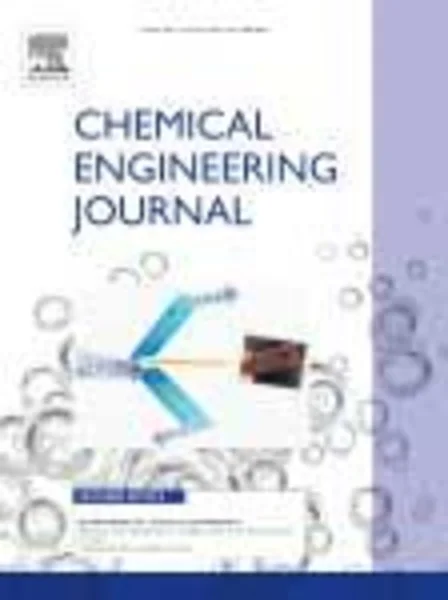-
degradation of organic dye by pulsed discharge non-thermal plasma technology assisted with modified activated carbon fibers
جزئیات بیشتر مقاله- تاریخ ارائه: 1392/01/01
- تاریخ انتشار در تی پی بین: 1392/01/01
- تعداد بازدید: 557
- تعداد پرسش و پاسخ ها: 0
- شماره تماس دبیرخانه رویداد: -
methyl orange (mo) was employed to evaluate degradation efficiency of the synergistic effect of activated carbon fibers (acfs) and pulsed discharge non-thermal plasma in aqueous solution. in order to study the roles of the acfs during the degradation activities, adsorption–catalytic effects of acf samples modified with h2o2, fe(no3)3 and steam were assessed. the chemical and physical properties of these acfs were characterized by xrd, sem, bet and chemical titration methods. for comparative purposes, experiments of adsorption on acf samples, plasma degradation, and plasma degradation in the presence of acf samples were carried out. plasma alone can obtain the decoloration of 77.3% for 100 mg/l mo solution and generate h2o2 (0.88 mm) and o3 (0.025 mm) after 30 min treatment. results also showed that the presence of either acf0 or modified acfs considerably improved mo decoloration and cod removal in the plasma reactor. compared with acf0 and acf–h2o2, a total decoloration of mo and above 90% cod removal were obtained in approximately 30 min for acf–steam and acf–fe(no3)3 due to their larger adsorption capacities and better catalytic effects. in combined degradation processes, the yields of h2o2 and o3 all decreased in presence of acf samples as compared with plasma alone process. it was also observed that acf samples can be well regenerated in combined processes and their adsorption behaviors contributed little for final organic removal.
مقالات جدیدترین رویدادها
-
استفاده از تحلیل اهمیت-عملکرد در ارائه الگوی مدیریت خلاقیت سازمانی و ارائه راهکار جهت بهبود
-
بررسی تاثیر ارزش وجوه نقد مازاد بر ساختار سرمایه شرکت های پذیرفته شده در بورس اوراق بهادار تهران
-
بررسی تأثیر سطح افشای ریسک بر قرارداد بدهی شرکت های پذیرفته شده در بورس اوراق بهادار تهران
-
بررسی تأثیر رتبه بندی اعتباری مبتنی بر مدل امتیاز بازار نوظهور بر نقد شوندگی سهام با تأکید بر خصوصی سازی شرکت ها
-
تأثیر آمیخته بازاریابی پوشاک ایرانی بر تصویر ذهنی مشتری پوشاک ایرانی (هاکوپیان)
-
بررسی تأثیر روش حل مسأله در تحقق اهداف دروس ابتدایی
-
پایه های شناختی تنظیم هیجانی در فاز مانیک و افسرده در بیماران دوقطبی و افراد سالم
-
اثربخشی شفقت درمانی مبتنی بر بخشش بر بهباشی زنان مطلقه
-
تاثیر بوروکراسی اداری بر اثربخشی سازمانی با میانجیگری فرهنگ سازمانی در ادارات بناب
-
determination of minocycline by rhodamine b-modified gold nanoparticles
مقالات جدیدترین ژورنال ها
-
مدیریت و بررسی افسردگی دانش آموزان دختر مقطع متوسطه دوم در دروان کرونا در شهرستان دزفول
-
مدیریت و بررسی خرد سیاسی در اندیشه ی فردوسی در ادب ایران
-
واکاوی و مدیریت توصیفی قلمدان(جاکلیدی)ضریح در موزه آستان قدس رضوی
-
بررسی تاثیر خلاقیت، دانش و انگیزه کارکنان بر پیشنهادات نوآورانه کارکنان ( مورد مطالعه: هتل های 3 و 4 ستاره استان کرمان)
-
بررسی تاثیر کیفیت سیستم های اطلاعاتی بر تصمیم گیری موفق در شرکتهای تولیدی استان اصفهان (مورد مطالعه: مدیران شرکتهای تولیدی استان اصفهان)
-
سبک زندگی اسلامی در همه گیری جهانی کرونا
-
تبیین اثر شایستگی سازمانی بر عملکرد شغلی کارکنان با نقش واسطه تسهیم دانش (مورد مطالعه: شعب بانک سینا در تهران)
-
تأثیر قابلیت نوآوری وتسهیم دانش بر عملکرد نوآوری وعملکرد بازاریابی (مورد مطالعه: بانک پارسیان استان تهران)
-
روند تغییر پرچم ایران از عصرصفوی تا دوران معاصر با بررسی عناصر رنگ، نشان و طراحی پرچم ایران
-
a comparison on psychological well-being in gifted and normal students




سوال خود را در مورد این مقاله مطرح نمایید :